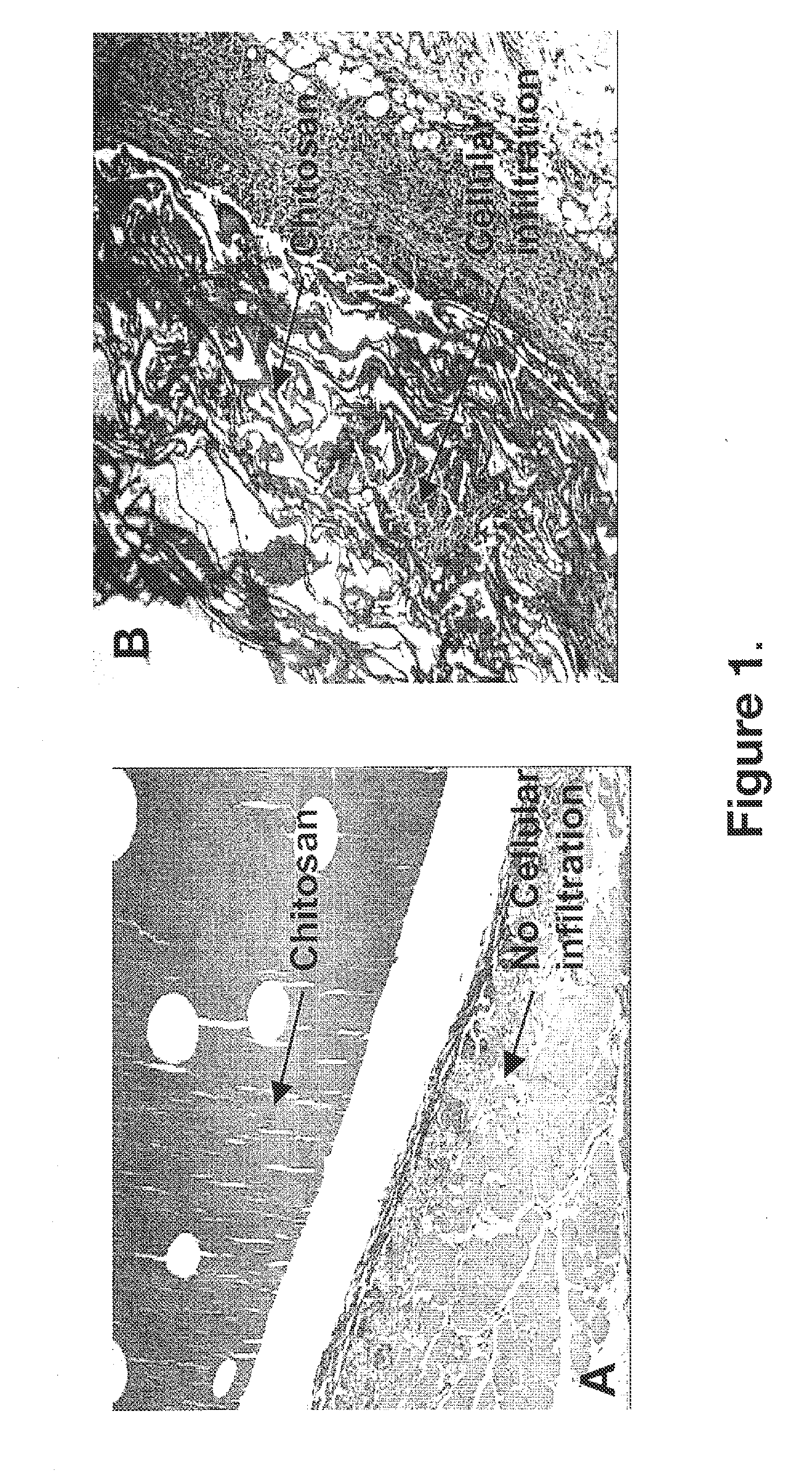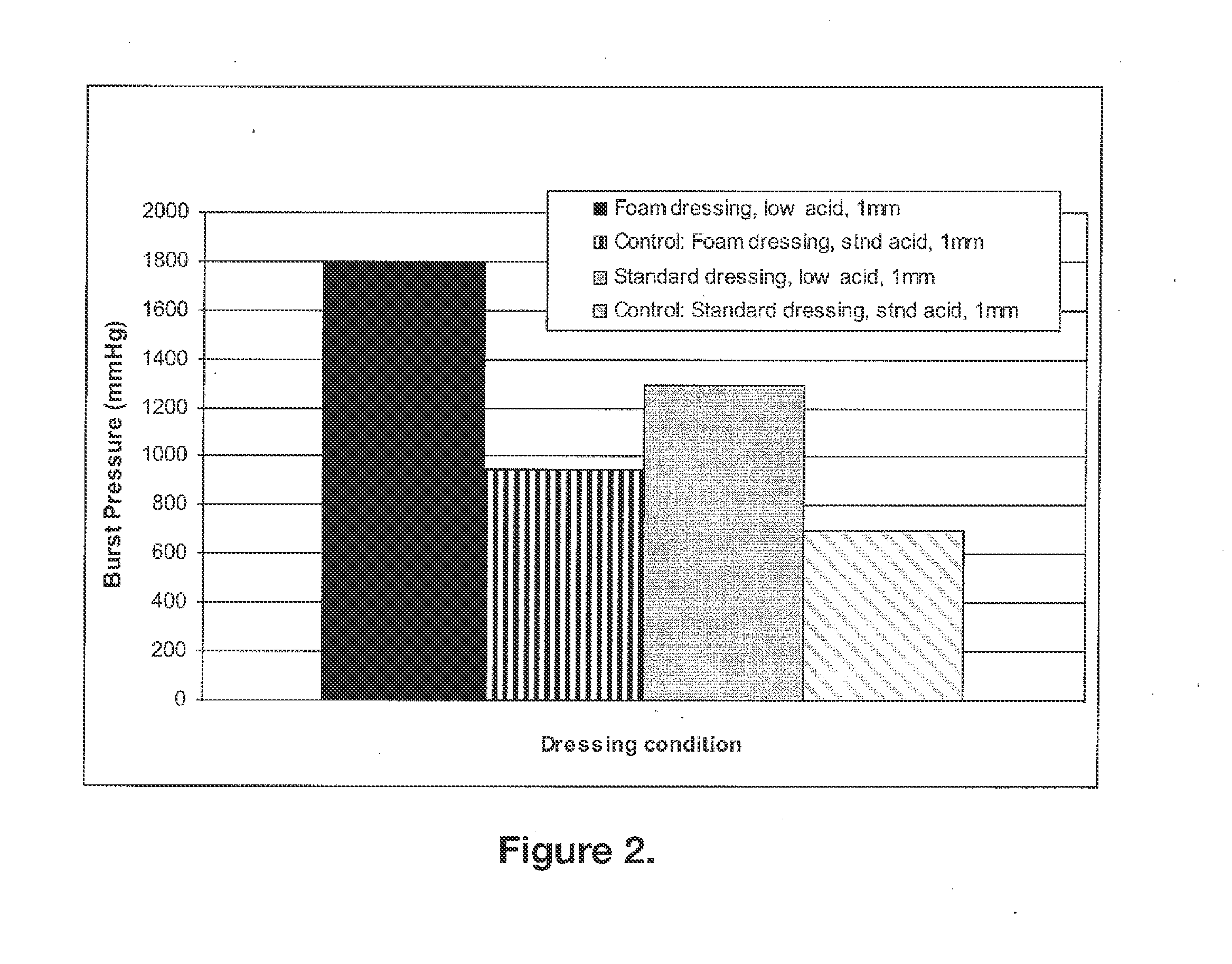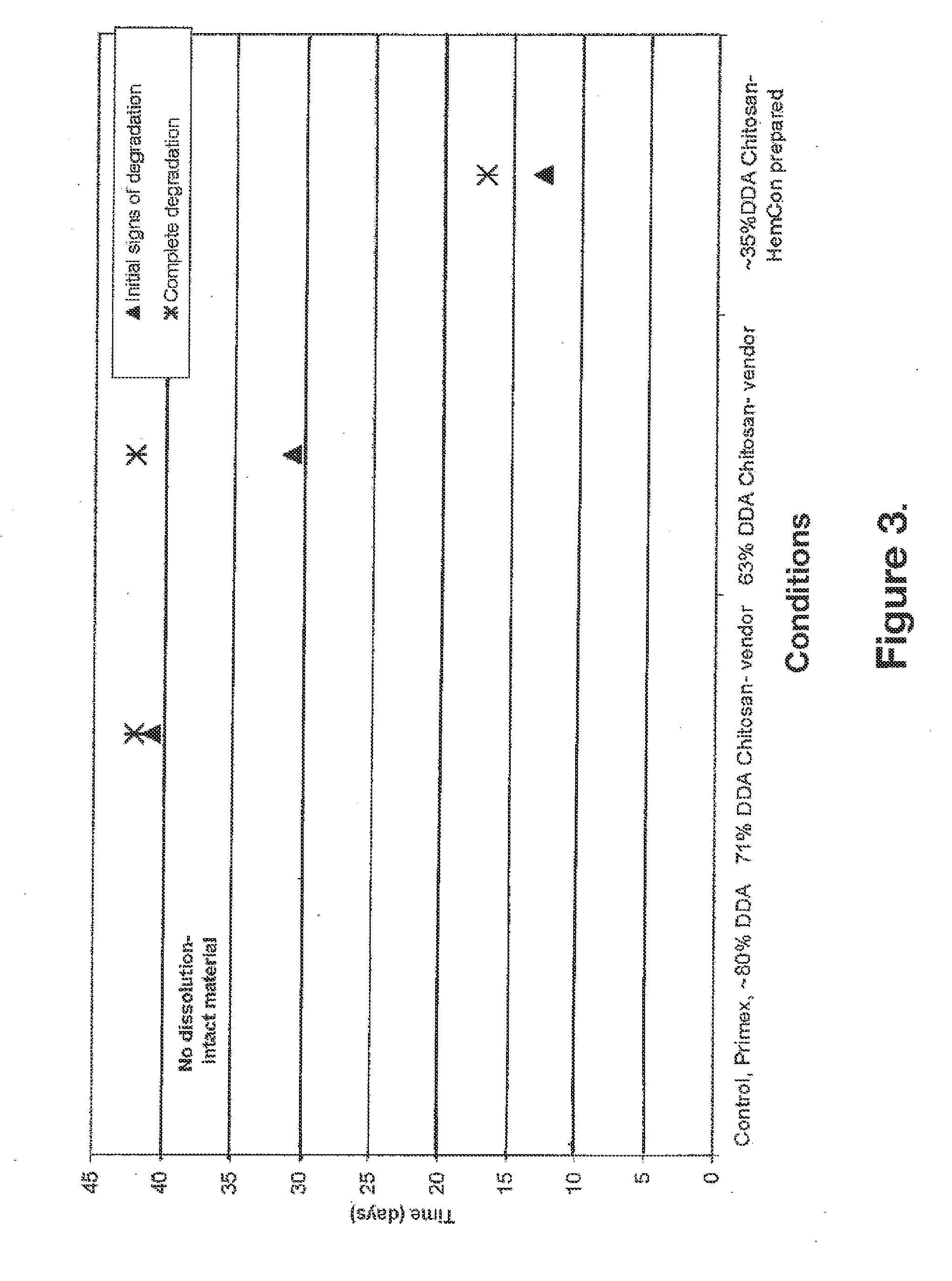Biocompatible and bioabsorbable derivatized chitosan compositions
a biocompatible, bioabsorbable technology, applied in the direction of biological material analysis, protein coating, prosthesis, etc., can solve the problems of unattractive solvent system, difficult processing, relative intractable polymer, etc., to reduce unnecessary risk to the recipient, the effect of rapid control of the bioabsorption of the biocompatible material
- Summary
- Abstract
- Description
- Claims
- Application Information
AI Technical Summary
Benefits of technology
Problems solved by technology
Method used
Image
Examples
example 1
Reduced Acid Content and Cellular Infiltration in Chitosan Compositions
[0100]Low (5% w / w) to minimal (<1% w / w) residual acid salt content in a composition of the present invention enhanced the composition's biocompatibility by removing composition dissolution effects and cytotoxicity directly associated with the chitosan acid salt. At lower levels (<3% w / w) of chitosan acid salt in the chitosan matrix, the original structure of chitosan matrix within the composition is maintained on wetting and viable cells readily infiltrate through the matrix. FIGS. 1A and 1B show two histopathology slides (rat, seven days after subcutaneous implant) that demonstrate the effect of the presence of acid salt in test compositions on the ability of cells to infiltrate the composition.
[0101]The compositions shown in FIGS. 1A and 1B are chitosan (88% DDA no gelatin) compressed compositions. These compositions were prepared by dissolution of chitosan in aqueous acetic acid solution, pouring the aqueous c...
example 2
Reduced Acid Content and Cellular Infiltration in 50:50 Chitosan:Gelatin Compressed Compositions
[0106]Two different approaches were pursued in an effort to achieve increased adherence efficacy of low-acid 50:50 chitosan:gelatin compressed compositions that were either foamed or not foamed.
[0107]Both approaches removed acid by the volatilization process to a level sufficient for achieving adherence (2%-5%) but also removed enough acid such that cytotoxicity or acidosis related toxicity were not major concerns.
[0108]The first approach started with a composition form having high adherence properties prior to low acid treatment with the goal of maintaining sufficient adherence properties to meet efficacy goals after low acid treatment. The second approach involved a novel low acid production process developed by the inventors to gently remove acid to minimize the effects of moisture on the composition's micro-structure. This second approach used a low level of less-volatile co-acid (e.g...
example 3
Comparative In Vitro Bioabsorption Testing of 50:50 Chitosan:Gelatin Foamed and Compressed Compositions Comprising Chitosan of Varying Degrees of Deacetylation
[0113]50:50 chitosan:gelatin foamed and compressed compositions, only different in degree of deacetylation (DDA), were tested in lysozyme at 37° C. for time-dependent susceptibility to absorption. As shown in FIG. 3, the compositions became increasingly susceptible to time dependent absorption in lysozyme as the DDA decreased. The compositions were prepared using the same procedures. The compositions were processed with Primex chitosan (DDA ≧80%), non-acetylated ultrapure FMC Novamatrix chitosan (DDA ≧85%) and acetylated ultrapure FMC Novamatrix chitosans. Varying degrees of deacetylation, 71%, 63%, and 35% were obtained for the test compositions.
[0114]The test compositions were suspended in a 0.37% w / w lysozyme solution at 37° C. Visual inspection of the samples was made at regular intervals. Visual inspection was made daily ...
PUM
| Property | Measurement | Unit |
|---|---|---|
| pH | aaaaa | aaaaa |
| weight average molecular weight | aaaaa | aaaaa |
| weight average molecular weight | aaaaa | aaaaa |
Abstract
Description
Claims
Application Information
 Login to View More
Login to View More - R&D
- Intellectual Property
- Life Sciences
- Materials
- Tech Scout
- Unparalleled Data Quality
- Higher Quality Content
- 60% Fewer Hallucinations
Browse by: Latest US Patents, China's latest patents, Technical Efficacy Thesaurus, Application Domain, Technology Topic, Popular Technical Reports.
© 2025 PatSnap. All rights reserved.Legal|Privacy policy|Modern Slavery Act Transparency Statement|Sitemap|About US| Contact US: help@patsnap.com



